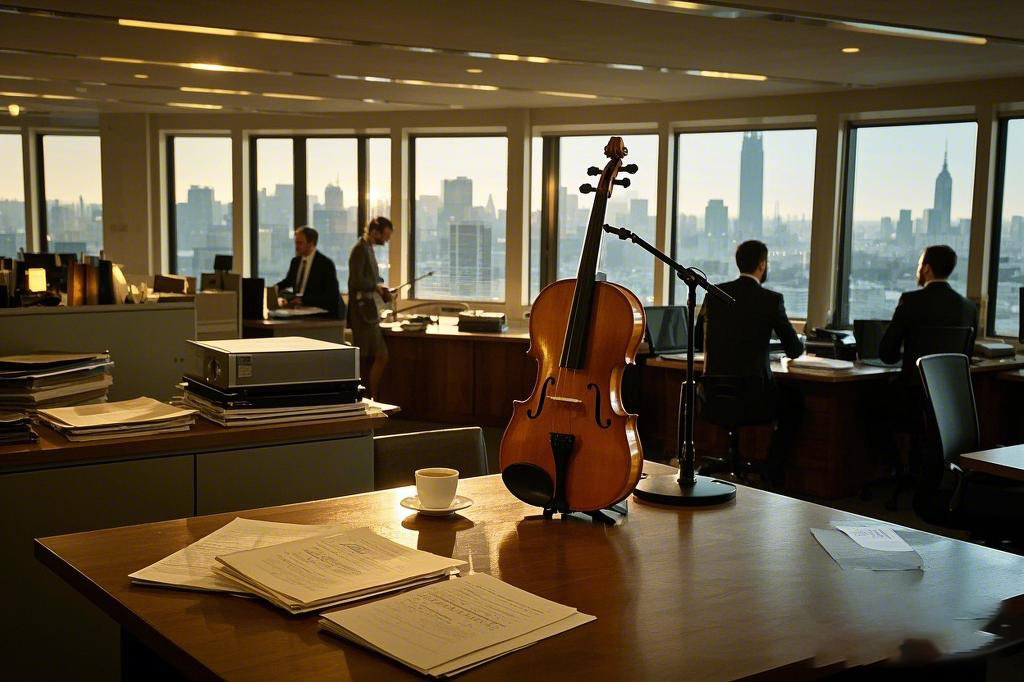Instrument Care 101_ Maintaining Violins in Humid Climates
Shang Kun 2025-05-17 139
Maintaining Violins in Humid Climates: What Every Musician Should KnowFor musicians living in humid climates, taking care of their violins becomes a constant challenge. The delicate wooden body, the strings, and the bow hair all have to contend with high moisture levels, which can lead to damage over time. Humidity can warp, crack, or even mold your violin, jeopardizing its sound quality and longevity. And let's face it, we all know how quickly things can spiral when your beloved instrument starts showing signs of wear.
Why Humidity is a Violin's Worst EnemyViolins, like any wooden instruments, are highly sensitive to changes in environmental conditions. The wood absorbs and releases moisture, expanding and contracting as humidity fluctuates. But in regions where the humidity is consistently high, these fluctuations become far more pronounced. This means that the violin's delicate structure can warp, crack, or even buckle. The fingerboard can soften, the glue can loosen, and worse yet, the varnish can start to peel away. So, if you’ve noticed an unusual sound from your violin or if it seems out of tune more often than usual, humidity might be to blame.
What’s a Musician to Do?How can you protect your violin from the havoc caused by humidity? It’s not just about keeping your violin in a safe corner of the room; it requires a more strategic approach. One essential step is maintaining a stable, moderate humidity level around the instrument. For this, using a hygrometer in your practice space can be a game changer. Aim for a humidity level between 40% and 60%. Anything higher or lower can lead to problems you’d rather avoid.

One simple trick is to use a violin case humidifier. These are easily available and fit right into your instrument’s case. They release just enough moisture to ensure the violin doesn't dry out, while also protecting it from excess humidity. Not only that, but they help maintain the proper tension of the strings, which can become too slack or tight depending on the environmental conditions.
Moreover, keeping the violin out of direct sunlight or near heat sources like radiators or air conditioners is essential. These elements dry out the wood and cause the instrument to shrink, potentially leading to cracks. Keep your violin in a cool, dry space where the temperature remains steady to help ensure that your violin lasts longer and continues to sound great.
Why You Should Act NowDon’t wait until it’s too late to take preventive action. If you’ve noticed small cracks, warping, or other signs of damage, it’s crucial to get your violin checked by a professional luthier. But prevention is always better than a cure. Just like a good routine can keep us feeling healthy, proper care of your violin can extend its lifespan and preserve its sound quality. Investing in quality humidifiers, controlling your room’s environment, and regular maintenance can make all the difference.
To really get the most out of your violin, learning how to care for it properly is key. Whether you're a seasoned musician or a beginner, understanding the effects of humidity on your instrument will help you make better decisions. Take it from me—there's nothing worse than discovering your violin is in bad shape when you're about to perform. So, keep your instrument safe, and it’ll keep producing beautiful sounds for years to come!
Take Care, Play LongerIn conclusion, maintaining your violin in a humid climate doesn't have to be a struggle. With the right tools and knowledge, you can ensure your instrument stays in peak condition. Whether you need expert guidance or hands-on training, a Chinese violin teacher like Shang Kun offers one-on-one lessons, either offline or online, to help you master not only playing but caring for your instrument too. Protect your violin and let it inspire your music for many years to come!
